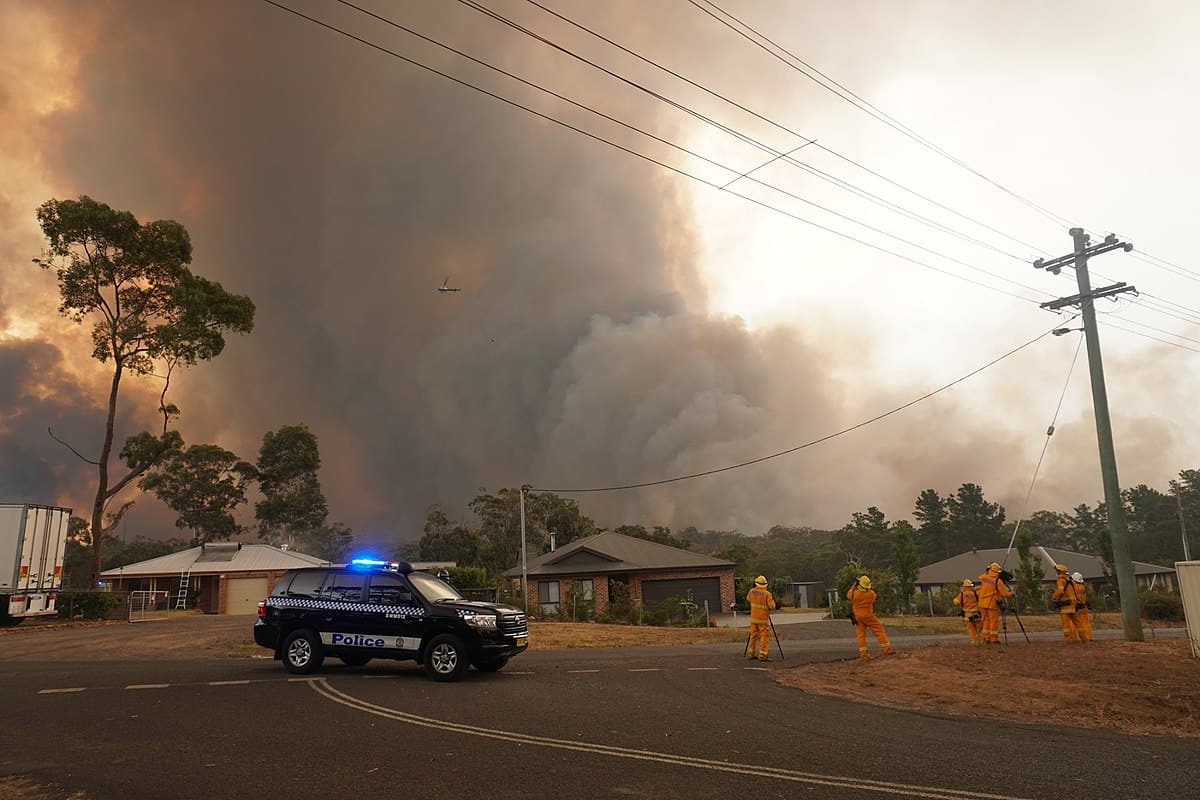Smoke from large fires can travel across much of the planet, changing the weather, Israeli scientists say.
Bushfires in places like Australia may seem like localized calamities, but they aren’t. Smoke from large fires can travel across much of the entire planet, changing the weather, Israeli scientists say.
During the extreme months-long fire season down under between 2019 and 2020, millions of tons of smoke particles were released into the atmosphere with most particles settling to the ground after a while. Yet other particles from a part of the country ending up covering the entire Southern Hemisphere for months.
The scientists determined this by tracking spikes of airborne aerosols that showed up in satellite imagery in January and February last year in the high rate of particle-laden haze around the Southern Hemisphere and tracing them back to Australia’s bushfires.
“[T]his smoke caused record-breaking levels of aerosols in the atmosphere blanketing over the Southern Hemisphere, as much as that from a moderate volcanic eruption,” the two Israeli scientists explain in a study.
“The severity was caused by a combination of the vigor of the fires and their location at a latitude with a shallow tropopause and within the midlatitude cyclones belt. This aerosol increase caused considerable cooling over oceanic cloud-free areas,” the elucidate.
In January 2020, measurements showed a deviation in the rate of aerosols three times the normal level, which made for some of the highest readings ever obtained. It was higher even than those from the eruption of the volcano Mount Pinatubo in the Philippines in 1991.
At first the scientists were puzzled by the origin of the large amounts of aerosols high up in the troposphere, several kilometers above ground, but eventually they pinpointed the source as raging bushfires in the southeastern part of Australia, which caused massive devastation that year in the country. Irregular cloud formations and other weather patterns helped the particles waft upwards and penetrate high up into the air from where they could spread far and wide, they explain.
Once they have made their way to the stratosphere, the particles got caught in a single strong current moving eastwards over the ocean to South America and back over the Indian Ocean toward Australia, causing the particles to slowly settle around the entire hemisphere.
“People in Chile were breathing particles from the Australian fires,” notes Eitan Hirsch, head of the Environmental Sciences Division at the Israel Institute for Biological Research.
Because the aerosols wafted on an endless air current high in the troposphere, they could remain airborne much longer than smoke particles lower down in the atmosphere.
“For people on the ground, the air may have just seemed a bit hazier or the sunsets a bit redder. But such a high AOD [aerosol optical depth] — much, much higher than normal — means sunlight was getting blocked, just as it does after volcanic eruptions,” says coauthor Prof. Ilan Koren, a scientist at the Weizmann Institute of Science’s Earth and Planetary Science Department.
“So the ultimate effect of that smoke on the atmosphere was cooling, though we still do not know how much influence that cooling and dimming may have had on the marine environment or weather patterns,” Koren adds.
At any one moment bush fires are burning in hotter climates as forests catch fire in heat or else people decide to clear forests for agricultural land by burning down vegetation. Yet the larger-scale effects of these fires on the weather elsewhere have yet to be fully understood.
“There are always fires burning in California, in Australia and in the tropics,” Prof. Koren says. “We might not be able to stop all of the burning, but we do need an understanding that the precise locations of those fires may grant them very different effects on our atmosphere.”
This story first appeared on Sustainability Times
South Africa Today
© 2021 Sustainability Times.
This article is licensed under a Creative Commons Attribution-ShareAlike 4.0 SA International License.












